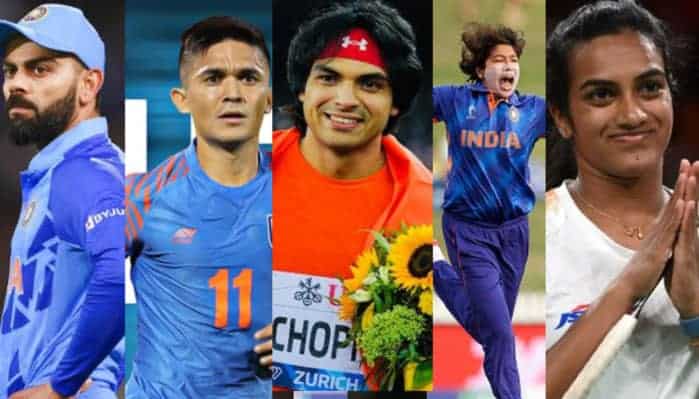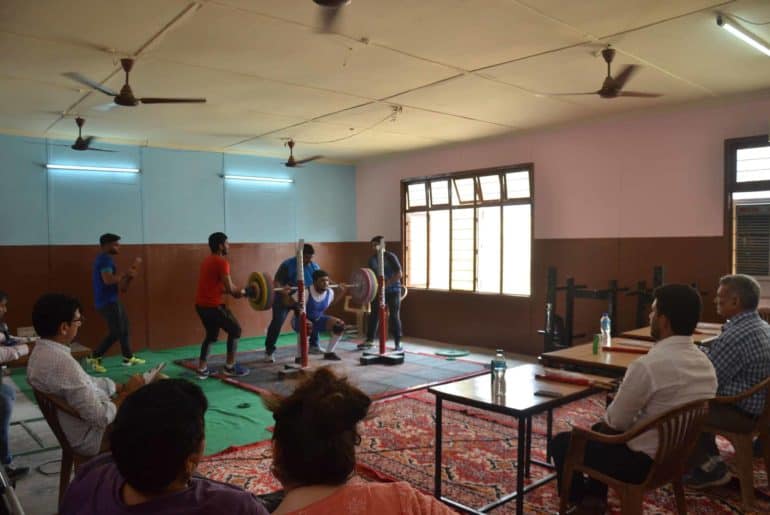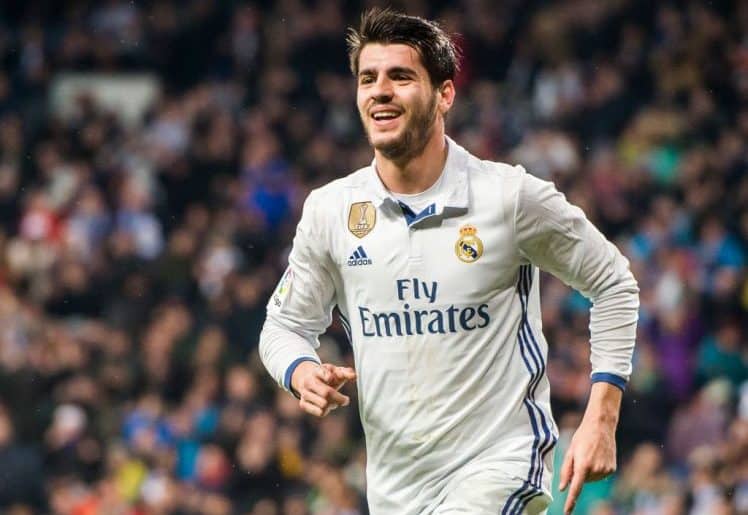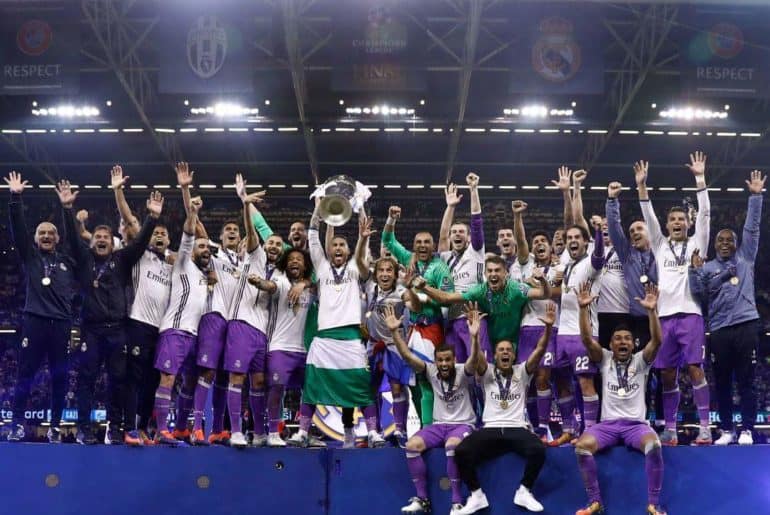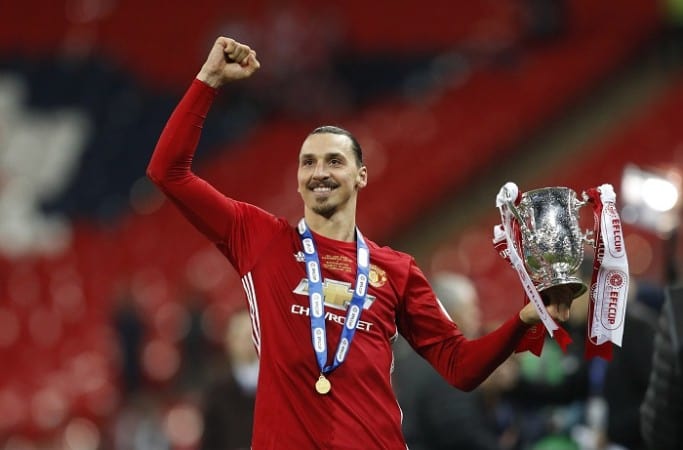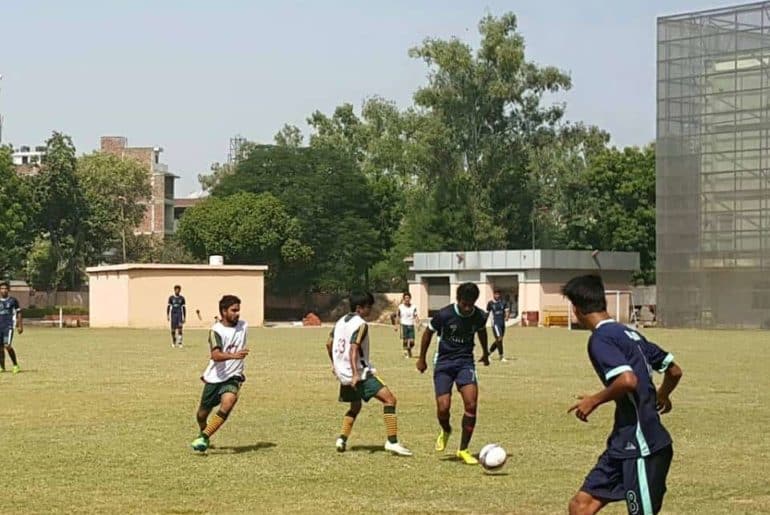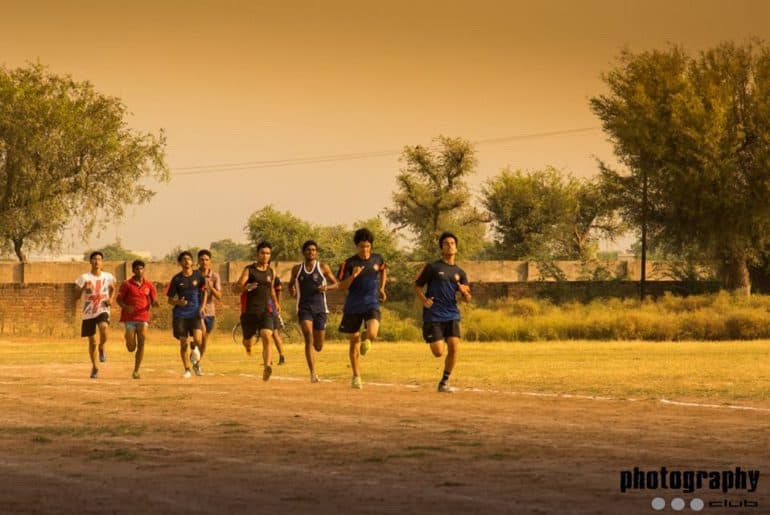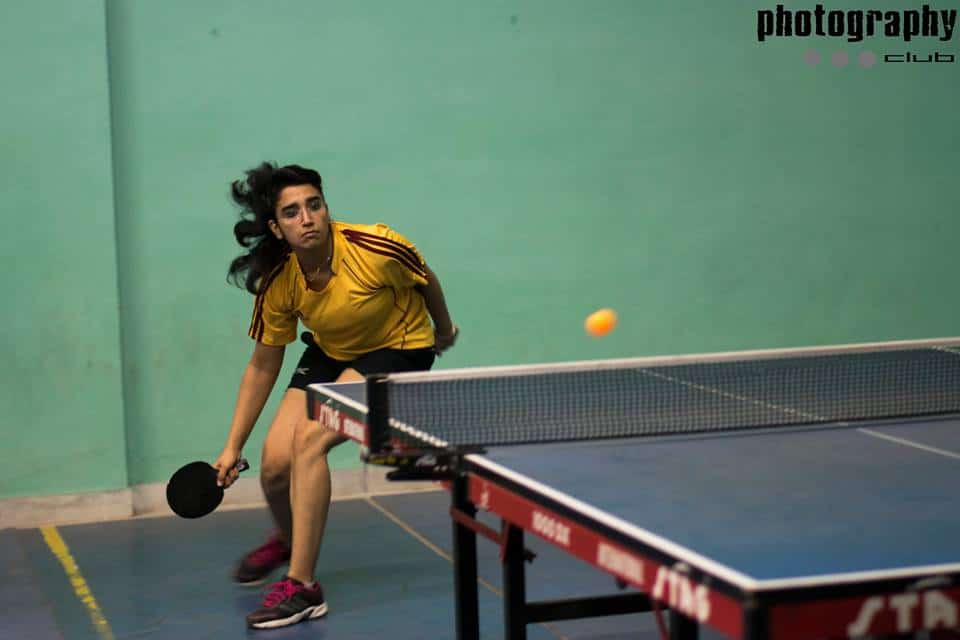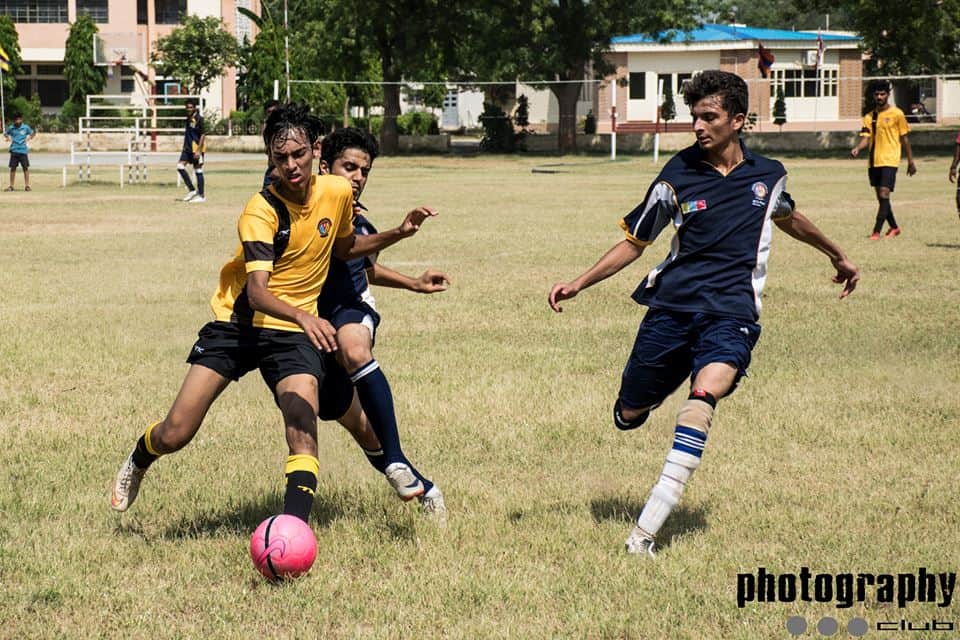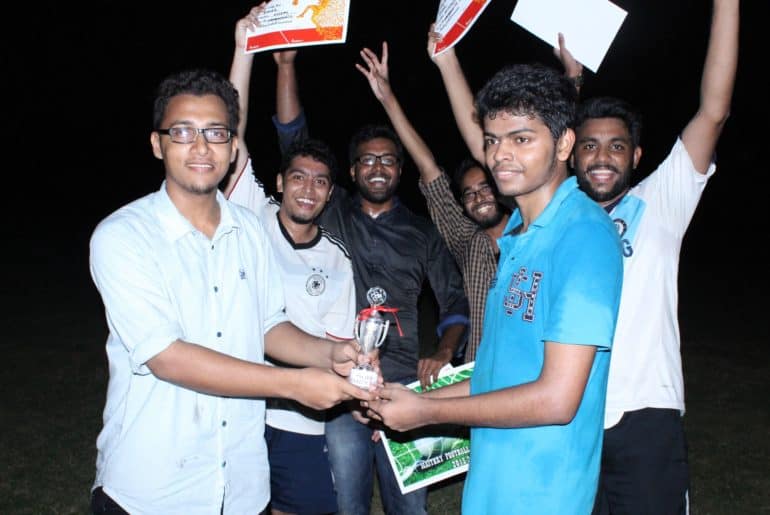The FIFA World Cup is a global sensation. The Qatar edition happens to be the most expensive one yet – financially and morally.
Eight years ago, in June 2014, a phenomenon was taking the planet by storm. The FIFA World Cup was taking place in Brazil – the home of flair, samba and carnival. Like any other 10 year old, I found myself glued to the TV to figure out what all the fuss was about. The aforementioned TV was broadcasting a match between Spain and the Netherlands. Well, the little boy version of me knew Spain was supposedly a big deal that had won the last World Cup and that one of the players in the Dutch team played for Manchester United and wore my birthday number. All I knew was that his shirt said “v. Persie” with the number 20 and it was enough to change my allegiance. And then, he shocked the world (and little me) by scoring one of the most outrageous goals in the history of the sport.
That was the day, dear reader, that this boy found a new thing to obsess over for almost an entire decade. I wasn’t alone either, football or “the beautiful game” is the most widespread sport on the planet. For context, there are 195 nations on Earth, with 193 being member nations of the United Nations. FIFA (Fédération Internationale de Football Association) has 211 recognised national football associations – 192 of which are fully recognised independent nations.
The FIFA World Cup is the culmination of this obsession with kicking a ball into a net and it takes place every four years. It is a celebration of the sport and a month-long tournament that invites the 32 best footballing nations across the globe to represent their national teams and take home the golden trophy. This week, on the 20th of November, 2022 the 22nd edition of the competition was kickstarted in Qatar.
In 2014, the World Cup was played in Brazil – the home of the record five time champions. Since then, it has been played in Russia in 2018 and now, in Qatar in 2022 and both these editions of the legendary competition have seen allegations of corruption and general backlash. Qatar, though, has been especially ensnared by a web of scandals surrounding the entire tournament.
The first scandal took place way back in 2010, when FIFA was deciding where to host the 2018 and 2022 FIFA World Cups amongst the nations that had bid for the opportunity. Two months before the organisation was supposed to announce the winner, it had to suspend 2 of its 24 member executive committee – that was in charge of selecting the host nation – due to them being accused of offering to sell their votes. The two men would later receive temporary bans from FIFA. Four years later, leaked emails implied that Qatari football official and former FIFA executive committee member, Mohammed bin Hammam had allegedly bribed FIFA officials to ensure the success of Qatar’s bid. At the time, he had already received a lifetime ban from FIFA in 2011 for unrelated corruption charges. There were subsequent investigations by both: the US Department of Justice and the Swiss authorities into FIFA’s alleged corruption. Over the next few years, several FIFA officials were convicted of corruption charges and were arrested, banned from football or forced to go on the run. The most prominent of these was then FIFA president, Sepp Blatter, resigning shortly after winning a reelection campaign to his fifth consecutive term. In April 2020, the Department of Justice released new evidence that again implied that three FIFA officials had received bribes from unnamed intermediaries to vote for Qatar. However, while almost all of the then FIFA executives were arrested, fined or banned in police raids and prosecutions, neither the US Department of Justice nor the Swiss authorities could ever connect the other end of the bribery string to Qatar.
Fair or not, Qatar had won its bid in 2010 and that meant preparing to welcome the best players of the world in 2022. One problem, though: the small Middle-Eastern nation wasn’t equipped to play a tournament as big as the World Cup yet – and that meant investing. And invest it did – the Qatar World Cup is the most expensive World Cup in history. The country had the cash for it and thus went on to spend 220 billion USD in building seven stadiums, a new airport, a series of roads, metro system and about 100 new hotels. An entire city was built around the stadium that will host the final match. Qatar’s government says that over 30,000 migrant workers from countries like India, Bangladesh, Nepal, Pakistan and more were hired to build the infrastructure for the event. In 2021, The Guardian reported that, according to numbers provided by the aforementioned countries’ embassies, over 6,500 migrant workers had died working on the event since Qatar had won its bid in 2010.
Qatar’s treatment of migrant workers is not new. It is a result of poor labour laws and the kafala system (a sponsorship system where workers are tethered to their sponsors in legally binding contracts). In 2016, a non profit organisation, Amnesty International, accused Qatar of using forced labour by withholding wages and passports. Migrant workers told Amnesty International that they received verbal abuses and threats when they complained about not being paid for several months. Nepali workers were not even allowed to return home after the 2015 Nepal earthquakes. Amnesty further accused FIFA of failing to stop the stadium being built on “human rights abuses”. Qatar did go on to implement reforms such as implementing a monthly minimum wage and reforming the kafala system. However, these reforms have still been described as too little too late by human rights organisations across the globe. 6,500 people had still needlessly died in the 11 years before, the new minimum wage was still too less for Qatar’s high living costs and abuses were still taking place albeit to a lesser degree. These abuses have seen backlash from other football associations as well, especially the US, England and the Netherlands. Various professional footballers have regularly talked about the long list of allegations against the country. England and the Dutch national team have even invited migrant workers to train with the squad in a show of support. While Qatar has definitely taken steps to address the situation, one must wonder if a country that needs global backlash to start changing its abusive ways is a good candidate to host an event that is supposed to bring the world together.
I think for what we Europeans have been doing for 3,000 years around the world, we should be apologising for the next 3,000 years before starting to give moral lessons to people.”- Gianni Infantino, FIFA President defending Qatar
With a history of human rights abuses, it was not long before the world would show up at Qatar’s door accusing them of sportswashing. “Sportswashing” is a term coined by human rights activists in the 2010s to describe regimes with a reputation of oppression and cruelty using sporting events to clear up their reputation. In recent years, there have been many accusations of sportswashing made in the football world. The previous World Cup held in Russia was accused of it, and so was the Russian oligarch and one of Vladimir Putin’s trusted advisors, Roman Abramovich. Abramovich was the former owner of Chelsea Football Club and his regular millions of dollars of investments into the club brought it much success over the past decade. In Abramovich’s case, it worked: after Russia invaded Ukraine, the British government forced Abramovich to sell the club due to his involvement as a close advisor of Putin. During the momentary applause before Premier League games in solidarity with Ukraine that was conducted at the time, Chelsea fans sang Abramovich’s name as a show of support – completely disregarding his involvement with the aggressors of Ukraine. We are yet to see if Qatar’s alleged sportswashing attempts have worked – although some experts fear it might have but for a reason far removed from actual football.
The unfortunate reality of this “beautiful game” is that football fans can be incredibly bigoted. Sexism exists as keyboard warriors do their best to undermine women’s football at every turn, mocking demands of fair pay. Racism has only seen a real decline in recent years but still rears its heads whenever a person of colour cannot perform on the pitch. Homophobia is rampant – to the point where there is exactly one footballer who belongs to the LGBTQ community and is heading to the FIFA World Cup (Josh Cavallo for Australia). This unfortunate characteristic has made fans support Qatar’s anti LGBTQ stance while disguising these archaic and dystopian beliefs as “respecting their culture” and accusing the west of “shoving woke propaganda down everyone’s throats”. Qatar happens to have a history of curtailing the rights of the LGBTQ community and women. The country has draconian laws that criminalise sexual intercourse between individuals of the same sex and forces transgender people to undergo conversion therapy. Qatari members of the LGBTQ community have reported being intimidated and harassed by the police regularly. An environment like this has made many fans from the community reluctant to attend the World Cup for fear of punishment by Qatari authorities simply for their identities. In 2010, when asked about Qatar’s inclusion of the LGBTQ community, Sepp Blatter had told the community that they “should refrain from any sexual activities.” While FIFA then issued an apology at the time, and has recently assured fans they would not be prosecuted for such a situation, the atmosphere is still too hostile to risk for most people.
This situation has also seen backlash from various footballing nations. Eight European nations had announced that they would be wearing “One Love” armbands in support of the LGBTQ community. FIFA, however, warned the teams that should they go along with the plan, they would immediately be cautioned with yellow cards when the game kicks off. This has forced the countries to step down from their decision but not without criticising FIFA’s decisions. Fans have allegedly been targeted when wearing rainbow flags or hats in the stadiums. A US reporter was allegedly denied entry by security due to him wearing a rainbow shirt. The President of FIFA, Gianni Infantino has repeatedly defended Qatar in various statements and has also insisted that the country’s leadership welcomed people with open arms regardless of their sexuality, sex or race. Yet, the experiences of the fans in the actual stadiums beg to differ.
Seeing you have banned all teams to wear the One Love armband to actively support LGBTQ+ at the World Cup. You have lost my respect. All the work my fellow allies and the LGBTQ+ community are doing to make football inclusive, you have shown that football isn’t a place for everyone.” – Australian footballer Josh Cavallo, a member of the LGBTQ community, addressing FIFA
Even if somehow you can get rid of human empathy and move past the human rights abuses, corruption and stigma surrounding the tournament, the actual match-watching experiences aren’t satisfactory either. The World Cup saw the construction of “fan villages” such as the Rawdat Al Jahhaniya which have been extremely criticised. The issue is, these so-called fan villages are made out of shipping containers and cost 300$ a night. Shipping containers in the desert with malfunctioning air conditioners for 300 USD a night – ah yes, the football fan’s utopia.
The match-watching experience for many fans also involves a lot of alcohol and FIFA knows that. After all, there is a reason that Budweiser is a main sponsor for the tournament. Despite Qatari laws prohibiting the sale of alcohol, FIFA had assured fans that alcohol would be served around the stadium. Budweiser was given designated areas in stadiums where alcohol could be sold and fans could be allowed to consume it. However, eight days before the event, Qatari officials informed Budweiser that their tents would be moved to less prominent locations and were no longer allowed inside the stadium itself but could be sold within the perimeter. Two days before the tournament, FIFA announced that all points of sale of alcoholic beverages would be removed from the stadiums in direct contradiction of the Qatari bid in 2010. This was a surprise, since in 2014 FIFA had forced Brazil to alter its previously stricter laws to allow World Cup fans to consume alcoholic beverages in the stadium freely – at the grave risk to safety and security.
I think personally, if for three hours a day you cannot drink a beer, you will survive.” – Gianni Infantino, FIFA President
This tournament has not proved to be a good proposition for the professionals that compete in it either. Traditionally, the World Cup takes place for an entire month in June, while players play for domestic leagues and cups from August to May. However, due to Qatar’s desert climate, the tournament was shifted to November-December as the climate would be too harsh on the players in June. The issue with this scenario is that the normal league seasons had been conducted as usual. However, with a FIFA World Cup sandwiched in between the normal league season the amount of games that players have to play during the same duration has increased by a lot. Throughout a normal season, teams often play more than 50 matches and it is normal for various players to be out with minor injuries for a game or two. With so many matches to play, though, it is expected that many players will suffer injuries that’ll keep them off the pitch for longer periods of time. While Qatar might be far from a fair World Cup, it is still a World Cup and most players do not often get the chance to represent their country at the biggest stage more than twice or thrice in their careers. It is thus, a huge blow to miss out on Qatar 2022 for anyone. Yet, this unusual tournament has led to a significant number of high profile players missing it such as Timo Werner, Christopher Nkunku, Lo Celso and more. The defending champions, France, have been especially unlucky with a number of their most important players such as Karim Benzema, Paul Pogba, Raphael Varane, N’Golo Kante and others missing the entire tournament.
These are unfortunately, still not the end of the things wrong with the Qatar 2022 FIFA World Cup. Qatar doesn’t allow free speech against its government, nor does it allow practice of any religion other than Islam in public spaces. There have been reports over the past few weeks that the country has hired people from Pakistan to play the role of fake fans to make up for the lack of travelling fans to the tournament. Qatar’s initial promises of sustainable stadiums and air conditioning for players on the pitch and the fans have started to be exposed as being hollow. The opener between Qatar and Ecuador was surrounded by rumours that Qatar had allegedly bribed 8 Ecuador players to lose the match (Ecuador won that by 2-0). Many Western nations have regularly hit back against the various controversies surrounding the tournament and Qatar at large. Denmark has decided to wear black jerseys instead of their usual red to mourn the deaths of the migrant workers who died in the past decade. FIFA has addressed these complaints by telling nations to “stick to football not politics” insisting that “FIFA is not in the business of giving moral lessons to the rest of the world”; a statement that the nations have openly expressed their displeasure for. An especially ironic statement considering FIFA chose to ban Russia from the FIFA World Cup after its occupation of Ukraine, showing that geopolitics in football only seem to matter when the party in the wrong is not currently generating revenue for FIFA.
The one good outcome of this is that the backlash is working even if only to a certain extent. There are positive steps being taken too. The Netherlands pledged on Friday to press FIFA into creating a long term resource centre for migrant workers in Doha. Several coaches and federations have backed calls to create a compensation fund for migrant workers. As mentioned before, eight European teams have done their best to show solidarity with the LGBTQ community, even publicly speaking out against FIFA’s attempts to stop them from doing so and despite homophobia prevailing in a majority of their fanbases. Even if too little and too late, Qatar did make some reforms to their predatory labour laws and hopefully further steps are not far behind.
I am no longer the 10 year old who fell in love with football thanks to the Flying Dutchman in 2014. I am 19 now and know way more about this beautiful game and somehow love it even more. This version of the FIFA World Cup is strange though; it doesn’t quite fill you with the same feeling of unity through a shared love for a game where magic is real. Maybe that’s because it simply doesn’t seek unity anymore, instead choosing to discriminate, oppress and alienate. Perhaps, for me and over a billion other fans, it is simply impossible to look past the ugliness of the beautiful game anymore.
Siddharth Kumar
Image credits: Sky Sports, Yahoo Sports, The Hindu, FIFA
Read Also: Sports and its Legions of Fanatics


